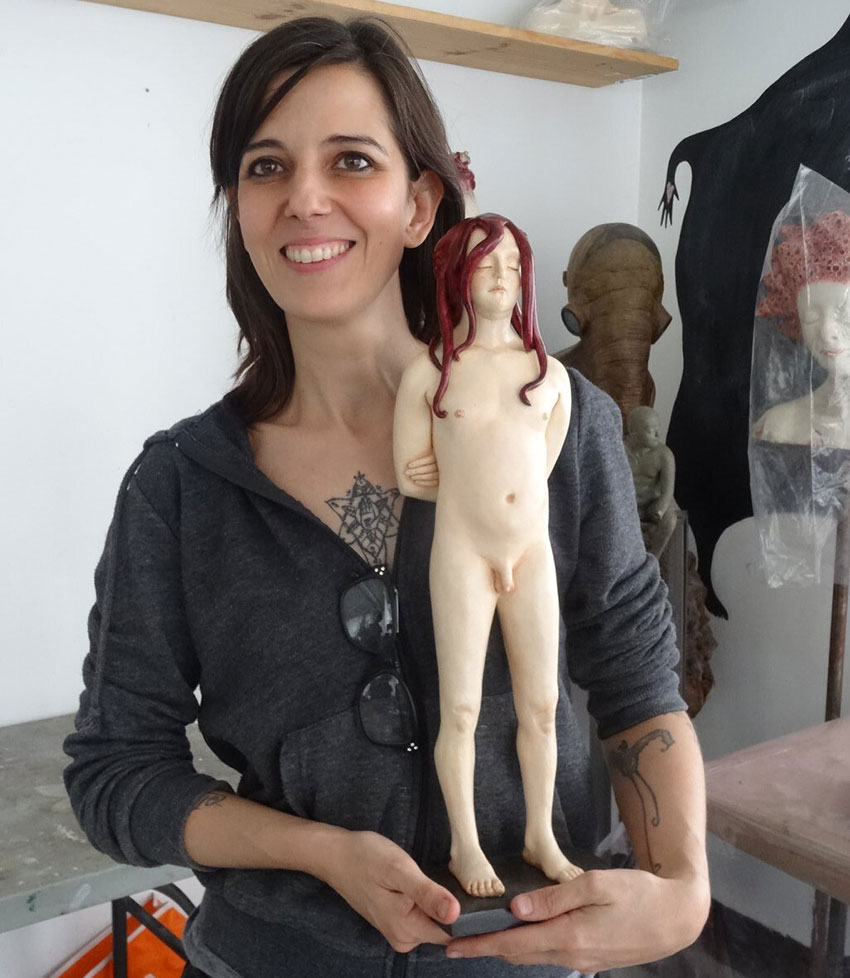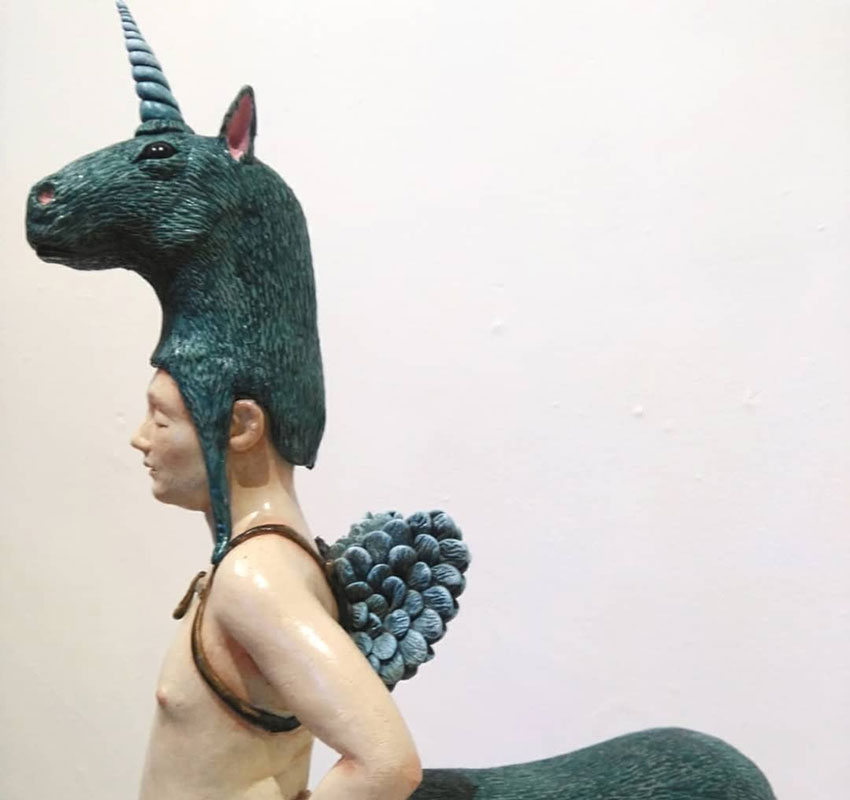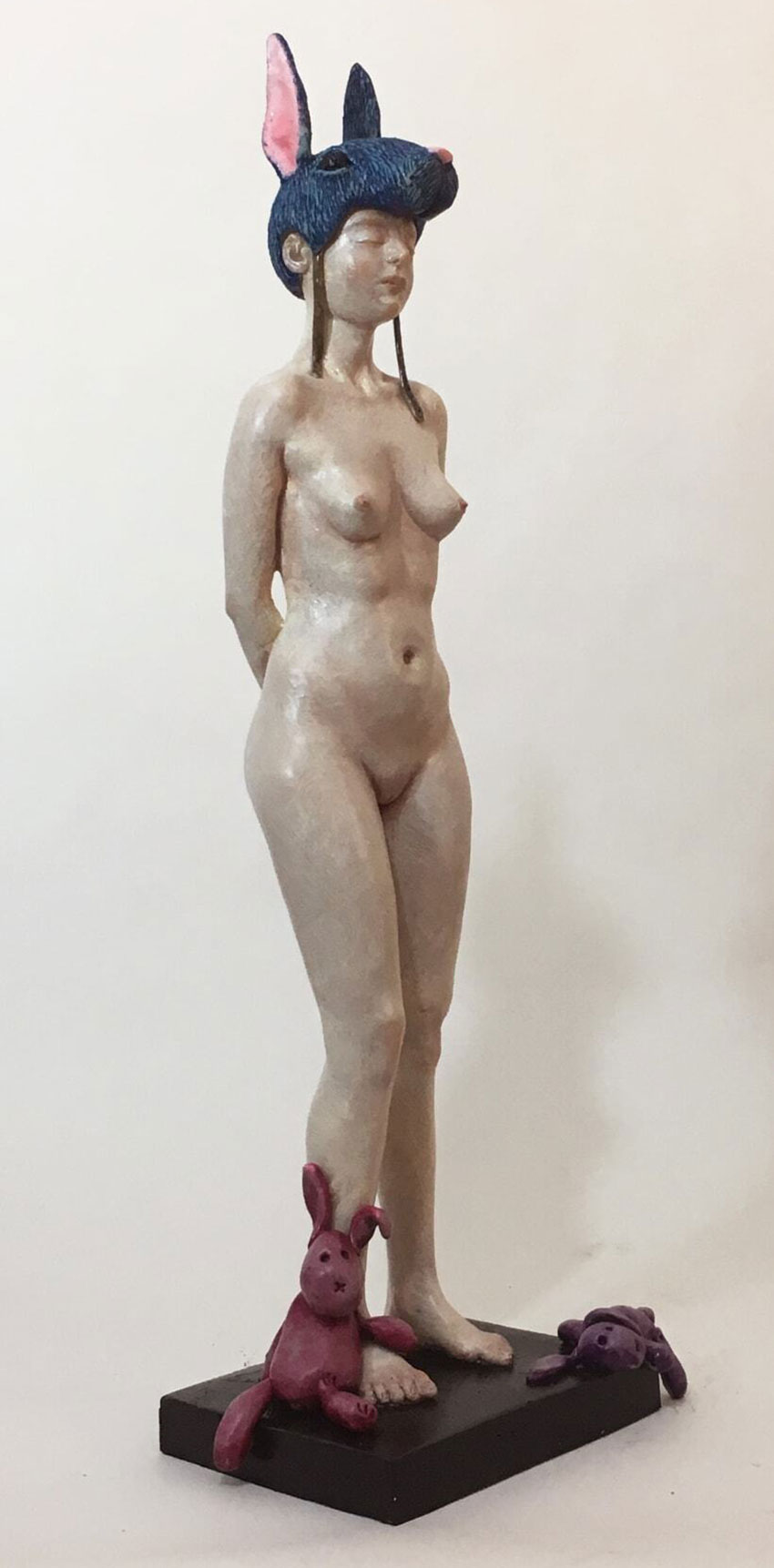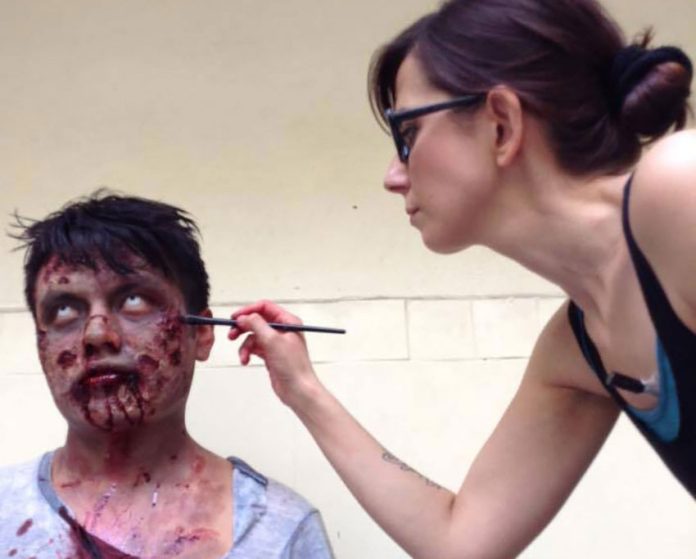Artist Francesca Dalla Benetta’s story shows how an even seemingly fragmented past can come together to make something truly amazing.
Despite being born and raised in Italy, a place synonymous with fine art, Dalla states that the country is “stuck in the 17th century aesthetically, with a culture that is all but dead.”
Although Dalla knew she wanted to be an artist and graduated from art school in Italy in 2003, she says she was unfocused and began working in stage scenery and special effects. However, the field is tightly controlled in Italy, she said. Without the right connections, it would be impossible to go far.
But Hollywood and Mexico gave her a new option: she landed a six-month gig in 2006 working on Mel Gibson’s movie Apocalypto, which was shooting in southern Veracruz. She was part of a multinational crew but found herself mostly hanging out with Mexicans and learning Spanish. The experience gave her contacts, and she found it quite possible to support herself in Mexico as a freelancer.
She spent many years in Mexico’s film industry, mostly making masks, arm and leg protheses, and fake cadavers. She met and married a Mexican man.

In 2009, her work caught the attention of an Italian wax museum, which hired her to make figures. She considers it a major break because during that period, she created entire figures depicting the living and her first work in sculpture.
At the same time, the long hours and extreme competitiveness of movie work was wearing her down. She even ran into Mexicans that resented her as a foreigner working in the country.
She shifted into teaching to pay the bills and began to sculpt. Her first experiments were based off the fantastic creatures she made for the movies, essentially taking what she learned there and applying it to fine art. She began to show her sculptures in 2012. By 2017, they were selling.
She decided that if she was going to be a “real artist,” she needed to move to Mexico City and so left Veracruz. Her home and workshop today are in the working-class barrio of Colonia Moderna, east of the more trendy areas of the city.
She prefers this neighborhood in part because it allows her to have more space at a reasonable price and because the area is less affected by earthquakes, a consideration after Mexico City’s 2017 quake.
Dalla has found success with a particular kind of surrealism. The Italian influence on her work is seen in the traditional European anatomy, with a preference toward the slightly plump figures of Renaissance art.

However, she emphasizes that while proportion is important to her, she tries not to fall into the “trap” of Old European perfectionism. Elements are added to create an otherworldliness.
In one series, there are human figures with animal heads or animal masks. They represent how we present ourselves to the outside world, either to disguise who we are or to demonstrate it. One interesting example is “Little Red Riding Hood,” a figure of a young girl with a wolf’s mask.
Other series have human figures, wholly or in part integrated with flowers and inanimate objects. Considered together, her work creates a kind of personal mythology. Some works have more than a hint of the Mexican concept of a nagual (a shapeshifter), whether that is conscious or not.
Unlike the vast majority of foreign artists I have met in Mexico, Dalla has contemplated conscientiously what it means to be a foreigner in this country. In 2012, she began a project to research the stories of other Italian immigrants to Mexico, in part due to a personal crisis that questioned her resolve to continue living in the country.
Her thought was that if she could find out how other Italians adapted and thrived in Mexico, she could, too. The project interviewed 50 people in the Mexico City area, focusing on questions of identity, resulting in 14 busts and 28 drawings. In the end, it served as a way for her to make peace with the cultural clashes she had been experiencing.
The trials and tribulations of being a stranger in a strange land can often bear artistic fruit. Dalla has taken the best of being both Italian and Mexican to combine them into something that speaks to the human psyche. Despite any complaints she may have about living here, she fervently believes that Mexico allowed her to come into her own.

“Mexico is the place that gave me the opportunity to develop myself as a sculptor and as a mature artist, an aesthetic concept, a career …”
She calls Mexico a “super fertile land,” and while she admits it is clichéd, she finds Mexico surrealist.
“There is something in the air here that makes one realize that anything is possible.”
Leigh Thelmadatter arrived in Mexico 17 years ago and fell in love with the land and the culture. She publishes a blog called Creative Hands of Mexico and her first book, Mexican Cartonería: Paper, Paste and Fiesta, was published last year. Her culture blog appears weekly on Mexico News Daily.
